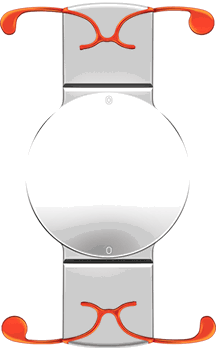ACCOMMODATIVE LENSES

Traditional monofocal lenses, including lens implants, focus light to only one point in space. An accommodative lens is able to provide vision at multiple distances, in a mechanism similar to the natural, crystalline lens.
An accommodative lens implant moves inside the eye as the eye's focusing muscle contracts, mimicking the eye's natural ability to focus. This feature addresses distance, intermediate and near vision and makes the recipient less dependent on glasses or contact lenses. The lens is typically used in patients who have both a cataract (cloudiness in the natural lens) and presbyopia (the loss of focusing power of the natural lens that occurs in eyes older than 40 years).
The advantage of the accommodative IOL is that it has the potential to restore the most natural focusing mechanism back to the aging eye of any IOL currently available. The reason for this is that it is the only IOL that moves and, thus, changes the focal length of the eye optics, similar to that of the natural lens. However, because the lens is able to move inside the eye, some disadvantages occur.
The main disadvantage is that the lens must heal into place inside the natural lens capsule of the eye from which the natural lens has been removed. The precise position the accommodative IOL ends up in cannot be accurately predicted preoperatively and depends on each individual eye's healing mechanism. The front to back position that the lens ends up in determines both how clear the unaided distance vision will be and also how much near vision will be available. On average, the accommodative IOL heals into position such that the distance vision is quite good and "social" near vision is achieved. If the lens heals into position slightly more forward than average, the near vision may be better than "social" while the distance vision will be more blurry. Conversely, if the lens heals into position slightly further back than average, the distance vision will likely be quite good but the near vision will be more blurry.
On average, about 20% of the time, the accommodative IOL will heal into position slightly away from the average location. In these situations, it may be possible to perform additional refractive surgery (e.g. LASIK, PRK, CK) to improve the range of unaided vision available. Of course, patients can always wear a pair of glasses to improve their vision during certain tasks as necessary.